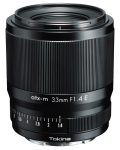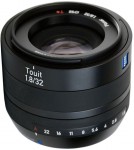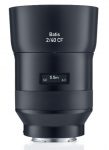Tamron 35mm F/2.8 Di III OSD F053
Wide-angle prime lens • Digital era
Abbreviations
| DI III | The lens is designed for digital mirrorless cameras. |
| OSD | The lens is equipped with Optimized Silent Drive. |
Features highlight




Specification
| Production details: | |
| Announced: | October 2019 |
| Production status: | ● In production |
| Original name: | TAMRON 35mm F/2.8 Di III OSD M1:2 F053 |
| System: | - |
| Optical design: | |
| Focal length: | 35mm |
| Speed: | F/2.8 |
| Maximum format: | 35mm full frame |
| Mount and Flange focal distance: | Sony E [18mm] |
| Diagonal angle of view: | 63.4° |
| Lens construction: | 9 elements in 8 groups |
| 1 ASPH, 1 LD | |
| On Sony NEX/a/ZV APS-C [1.53x] cameras: | |
| 35mm equivalent focal length: | 53.6mm (in terms of field of view) |
| 35mm equivalent speed: | F/4.3 (in terms of depth of field) |
| Diagonal angle of view: | 44° |
| Diaphragm mechanism: | |
| Diaphragm type: | Automatic |
| Aperture control: | None; the aperture is controlled from the camera |
| Number of blades: | 7 (seven) |
| Focusing: | |
| Closest focusing distance: | 0.15m |
| Magnification ratio: | 1:2 at the closest focusing distance |
| Focusing modes: | Autofocus, manual focus |
| Autofocus motor: | Optimized Silent Drive |
| Manual focus control: | Focusing ring |
| Focus mode selector: | None; focusing mode is set from the camera |
| Manual focus override in autofocus mode: | Determined by the camera |
| Vibration Compensation (VC): | |
| Built-in VC: | - |
| Physical characteristics: | |
| Weight: | 210g |
| Maximum diameter x Length: | ⌀73×64mm |
| Weather sealing: | Water-resistant barrel |
| Fluorine coating: | Front element |
| Accessories: | |
| Filters: | Screw-type 67mm |
| Lens hood: | HF053 - Bayonet-type dome-shaped |
| Teleconverters: | Not available |
| Source of data: | |
| Manufacturer's technical data. | |
Manufacturer description #1
October 23, 2019, Saitama, Japan – Tamron Co., Ltd. (President & CEO: Shiro Ajisaka), a leading manufacturer of optics for diverse applications, announces the launch of three fixed focal lenses for Sony E-mount full-frame mirrorless cameras: the 20mm F/2.8 Di III OSD M1:2 (Model F050), the 24mm F/2.8 Di III OSD M1:2 (Model F051), and the 35mm F/2.8 Di III OSD M1:2 (Model F053).
Having already produced award-winning zoom lenses* in this mirrorless category, we turned our attention toward fixed focal lenses. When using a fixed focal lens, the photographer must decide the composition based on their distance from the subject. This puts the joy of capturing the image exactly as envisioned and the pure fun of shooting on a different level. The three new models include a 20mm focal length (Model F050) to fully explore the world of ultra wide-angles, a 24mm focal length (Model F051) as the perfect general-purpose wide-angle lens, and the versatile 35mm focal length (Model F053) that is ideal for everyday/every subject use. Developed under the concept of “letting as many as possible learn the joy of fixed focal lenses in a more accessible way,” each lens strikes a balance between gorgeous image rendering and superior operation. We managed to match the same filter size (φ67mm) for all three fixed focal lenses as well as the two previously launched zooms and achieve our aim of compactness. Furthermore, the 20mm, 24mm and 35mm lenses are all capable of focusing very close, to an unprecedented in this category magnification ratio of 1:2. Other features include Moisture-Resistant Construction (for outdoor shooting) and a Fluorine Coating on the front element for easy maintenance and fingerprint removal. They also support various camera features offered by certain Sony cameras, such as Fast Hybrid AF and Eye AF, and offer a multitude of advanced functions to ensure a pleasant shooting experience and fantastic results. This series of highly practical lenses lets photographers enjoy the photographic expression of wide-angle lenses, often regarded as the sweet spot for most photographic pursuits, plus unprecedented light weight and full-blown performance.
* 28-75mm F/2.8 Di III RXD (Model A036) standard zoom and 17-28mm F/2.8 Di III RXD (Model A046).
1. Enhanced close-focusing capability expands lens usefulness and versatility
These fixed focal lenses focus very close. The MOD (Minimum Object Distance) for the 20mm, 24mm and 35mm is 0.11m, 0.12m and 0.15m (4.3, 4.7 and 5.9 inches) respectively. Plus, the maximum magnification ratio for all three is 1:2. This remarkable performance allows users to create compositions that emphasize perspective (closer subjects are larger and distant ones are smaller) and that are unique to wide-angle lenses.
Being able to get in close is one of the most desirable specifications for a wide-angle lens. With dramatic closeup shooting performance for full-frame lenses, the series unleashes an unprecedented level of shooting freedom. Plus, by moving close to the subject, strongly blurred backgrounds are easier to attain.
2. A compact, lightweight 67mm filter diameter system offering excellent portability
Weighing in at 220g (7.8 oz) for the 20mm (Model F050), 215g (7.6 oz) for the 24mm (Model F051) and 210g (7.4 oz) for the 35mm (Model F053), the lenses are exceptionally light, allowing photographers to enjoy shooting comfortably without hesitating about whether to carry the lens. All three lenses combined weigh under 1.5 pounds (645g)! Meanwhile other lenses in Tamron’s lightweight full-frame mirrorless series such as the 28-75mm F/2.8 (Model A036) standard zoom or 17-28mm F/2.8 (Model A046) ultra wide-angle zoom make the perfect companions to broaden the range of shooting possibilities.
As testament to their compactness, all three new models feature the same 67mm filter diameter as Tamron’s zoom lenses for full-frame mirrorless cameras. This significantly reduces cost and packing space when working with PL, ND and other filters. Even the front lens caps are the same size, eliminating the hassle of sorting caps when switching lenses. These features combine to produce a highly convenient and mobile system that adds more fun to photography.
3. Superb high-resolution performance that matches the latest high-resolution image sensors
The sophisticated optical formula created with the latest lens design technologies boasts exceptionally high rendering performance from edge to edge thanks to the optimal arrangement of LD (Low Dispersion) and GM (glass-molded aspherical) lens elements. Any remaining minor distortions sometimes common in wide-angle lenses are corrected using in-camera functions. Additionally, Tamron’s legendary BBAR (Broad-Band Anti-Reflection) Coating effectively reduces ghosting and flare. With excellent resolving power achieved through uncompromising optical performance and camera-based distortion correction, these lenses can be used with complete confidence for a wide range of applications from casual family snaps to serious professional photography.
4. Consistent 64mm (2.5 in) overall length facilitates ease-of-use
All three lenses are the same length: 64mm (2.5 in). Achieving excellent balance with Sony E-mount cameras, these compact lenses employ a front element extension system but are designed to maintain the same exterior length during focusing operations. Therefore, there is less chance of an extended front element accidentally coming into contact with a subject during closeup shooting. And optional manual focusing is easier because the focus ring is positioned toward the front of the lens within natural reach of the thumb and index finger.
5. Silent autofocus driven by OSD (Optimized Silent Drive) DC motor
The AF drive system employs an OSD to ensure quiet operation. In comparison to conventional AF types with built-in DC motors, Tamron was able to greatly reduce the drive noise as well as vastly improve AF performance and speed. The lower ambient noise level is sure to be appreciated by video shooters. Overall, this fixed focal lens series provides superlative AF precision for exact focus even when shooting moving subjects, as well as outstanding accuracy and tracking capability. Additionally, this fixed focal series supports various AF features offered by certain Sony cameras, including Fast Hybrid AF, Eye AF, and Direct Manual Focus (DMF) to ensure a pleasant shooting experience.
6. Moisture-Resistant Construction and Fluorine Coating
Environmental seals are located at the lens mount area and other critical locations to prevent infiltration of moisture and/or rain drops and afford Moisture-Resistant Construction. This feature provides an additional layer of protection when shooting outdoors under adverse weather conditions. Also, the front surface of the lens element is coated with a protective fluorine compound that has excellent water- and oil-repellant qualities. The lens surface is easier to wipe clean and is less vulnerable to the damaging effects of dirt, moisture or oily fingerprints, allowing for much easier maintenance. These protective features are keenly important for lenses that allow you to get in close to a subject.
7. Compatible with main camera-specific features and functions
All three of Tamron’s new fixed focal lenses are compatible with many of the advanced features that are specific to certain mirrorless cameras. These include the following:
- Fast Hybrid AF
- Eye AF
- Direct Manual Focus (DMF)
- In-camera lens correction (shading, chromatic aberration, distortion)
- Camera-based lens unit firmware updates
* Features vary by camera. Please consult your camera’s instruction manual for details.
Manufacturer description #2
The 35mm F/2.8 Di III OSD M1:2 (Model F053) is a wide-angle, fixed focal lens suitable for just about every shooting situation. The 35mm focal length is wide angle-of-view, but natural perspective and field-of-view for instinctive image capture. The lens is great for many different types of photography, including portraits with context, food photography, and nature. Very light in weight and compact, it hardly adds anything to the heft to your bag, so you can carry it comfortably every day. Focusing as close as 0.15m (5.9 in), you can fill the frame with even small subjects. In addition to the F/2.8 aperture, the Model F053 is constructed using special glass materials including LD (Low Dispersion) and GM (Glass Molded Aspherical) lens elements effectively arranged to quash aberrations. The Model F053 provides outstanding optical performance across the entire frame, and delivers a sharp image, right down to the texture of the subject. With Moisture-Resistant Construction and dirt-resistant Fluorine Coating, photographers can shoot confidently outdoors. You will discover beauty that you have never experienced before. This lens may lead you to new discoveries.
One of the key features that makes this lens so exciting is its amazing ability to shoot close-ups. With this lens, you can get closer to an object than you’d ever imagined. At the 0.15cm (5.9 in) MOD (Minimum Object Distance), the lens achieves its maximum magnification ratio of 1:2. You’ll never again be frustrated because you cannot get close to an object while shooting. This remarkable performance allows users to create compositions that exploit dramatic perspective (closer subjects are larger, and distant ones are smaller) and that are unique to wide-angle lenses. By getting close to an object, you can produce a one-of-a-kind photo and leverage the beautifully blurred background bokeh.
Take it with you anywhere. This lens travels as well as it performs. And because it’s matched to lightweight full-frame mirrorless cameras, your entire system becomes light, fast and nimble. It has a very compact body, weighing just 210g (7.4 oz) and an overall length of 64mm (2.5 in). It’s comfortably portable, highly maneuverable and amazingly easy to use and compose. Because the overall length does not change when focusing, you can get as close to an object as you need to without fear of accidentally bumping the front element. The lens has the same 67mm filter diameter as the other members of the series of Tamron high-speed lenses for Sony E-mount cameras. So you can swap filters (like polarizers), lens caps and other accessories for convenience. Who says great things can’t come in small packages?
This lens provides outstanding optical performance and overall image quality, characteristics relentlessly demanded from a prime, fixed focal lens. The expert arrangement of the LD and GM specialized glass elements greatly controls aberrations, including chromatic aberrations. Tamron’s proprietary BBAR (Broad-Band Anti-Reflection) Coating reduces ghosting and flare, which can otherwise occur when taking a photo against the sun. Moreover, leveraging your camera body’s features* it delivers, throughout the frame, high resolution performance that maximizes the benefits of the latest high-megapixel cameras. Whether shooting on the street, full-scale landscapes or architectural photography, this lens delivers exceptionally crisp, colorful and beautiful images and helps you fulfill your creative ambitions.
* When shooting with the camera’s lens correction function enabled.
The AF drive employs a newly developed OSD (Optimized Silent Drive) to ensure silent operation. Operating noise has been appreciably reduced thanks to a revamped and optimized AF unit. The precision and speed of autofocusing are increased to ensure accurate focus even when tracking constantly moving subjects.
For greater protection when shooting outdoors, leak-resistant seals throughout the lens barrel help protect your equipment.
The front surface of the lens element is coated with a protective fluorine compound that is water- and oil-repellant. The lens surface is easier to wipe clean and is less vulnerable to the damaging effects of dirt, dust, moisture and fingerprints.
A 7-blade diaphragm is configured to retain a smooth, circular-shaped aperture opening even when stopped down by two stops from the wide-open aperture. This produces a smooth-edged bokeh in background light spots and avoids rugged aperture geometry.
The application of BBAR (Broad-Band Anti-Reflection) Coating for suppressing reflections on lens element surfaces minimizes unwanted flare and ghosting to deliver sharp, crisp, high-contrast images.
This lens is just one of many Tamron lenses for Sony E-mount cameras. Throughout the lineup you’ll find creative tools that help you enjoy the world of mirrorless cameras and a broader range of photographic possibilities. Small and light weight (the perfect match for mirrorless cameras) they are definitively portable and can easily be all carried together as a complete set that’s ready for every situation. For convenience sake, all of the lenses in the series have the same 67mm filter diameter. You can share the use of a single polarizing (or other) filter and avoid the aggravation of searching through lens caps when changing lenses. Built with convenience and ease-of-use in mind, you’ll be attracted by the compact size and thoroughly dazzled by the outstanding performance.
Travellers' choice
- Fast speed (F/2.8)
- Very lightweight (210g) and compact (64mm)
- Water-resistant barrel
- Fluorine coating on front element
Lenses with similar focal length
Sorted by manufacturer name
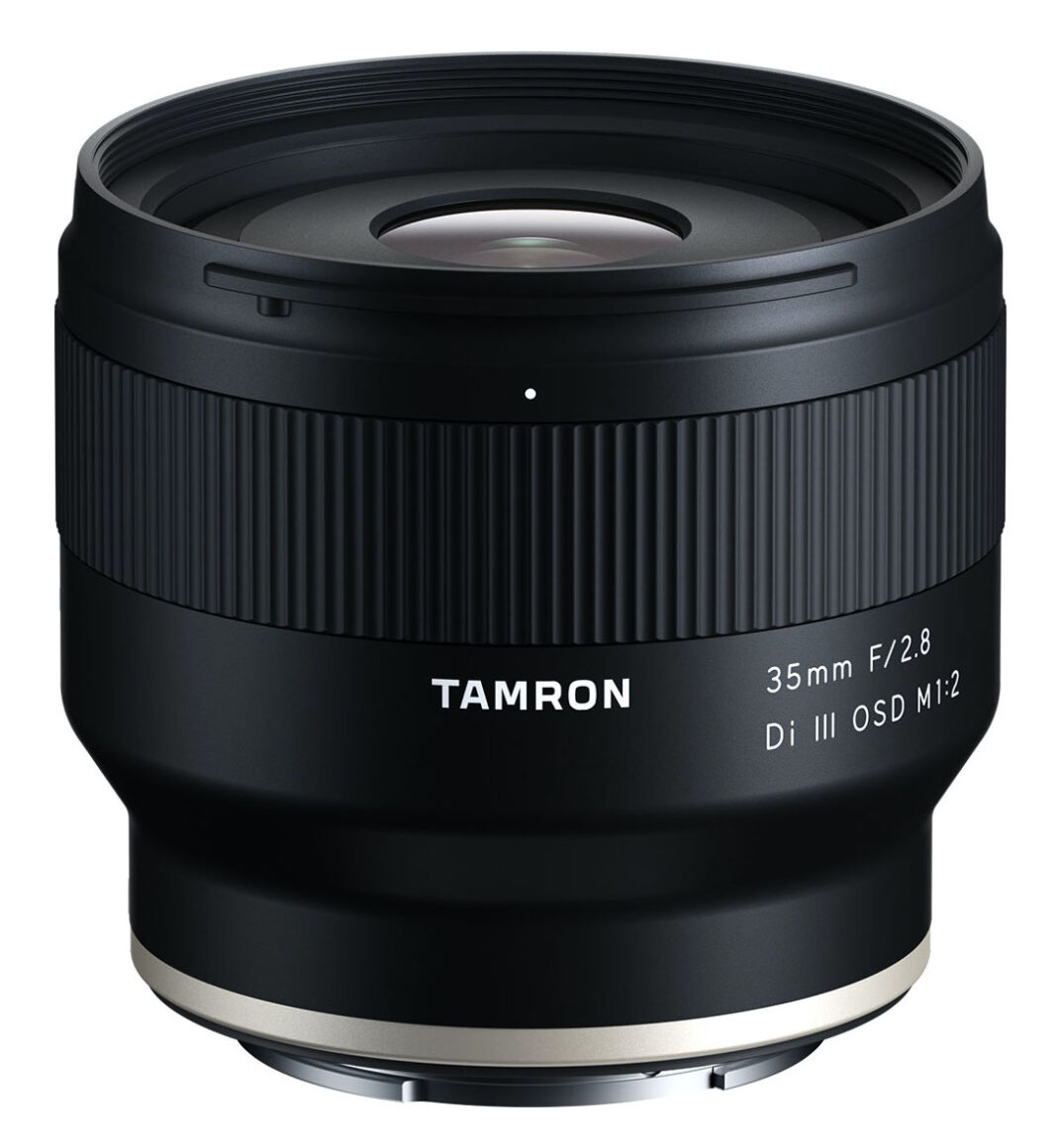
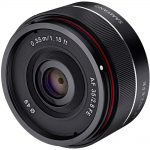

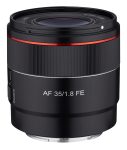

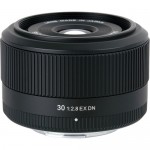
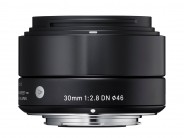
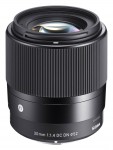

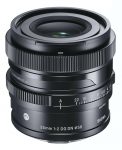

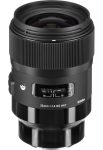

![Sony E 35mm F/1.8 OSS [SEL35F18]](https://lens-db.com/wp-content/uploads/2012/09/sony-e-35-18-01-140x150.jpg)
![Sony FE Carl Zeiss Sonnar T* 35mm F/2.8 ZA [SEL35F28Z]](https://lens-db.com/wp-content/uploads/2013/10/SEL35F28Z-112x150.jpg)
![Sony FE ZEISS Distagon T* 35mm F/1.4 ZA [SEL35F14Z]](https://lens-db.com/wp-content/uploads/2015/03/1126137-150x150.jpg)
![Sony FE 35mm F/1.8 [SEL35F18F]](https://lens-db.com/wp-content/uploads/2019/07/1562681203000_1492866-150x150.jpg)
![Sony FE 35mm F/1.4 GM [SEL35F14GM]](https://lens-db.com/wp-content/uploads/2021/01/1610533223_1613424-150x150.jpg)
![Sony FE 40mm F/2.5 G [SEL40F25G]](https://lens-db.com/wp-content/uploads/2021/03/1616495752_1630081-150x150.jpg)
